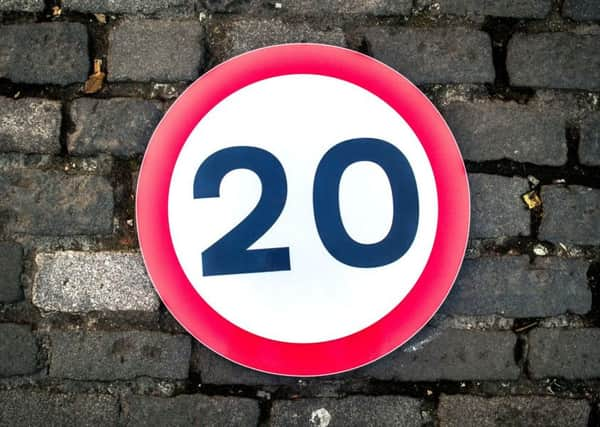Derek Halden: Don't speed to the conclusion that '˜Twenty's Plenty' for all restricted roads


As the largest professional body representing all modes of transport in Scotland, the Chartered Institute of Logistics and Transport seeks the highest possible standards in transport planning. The Institute has long promoted well designed 20mph zones in residential streets given the huge advantages achieved for road safety and in making local streets more attractive to live work and play. The Bill covers all restricted roads which includes not just residential streets but all urban lit roads including major through roads in towns and cities.
Setting custom speed limits on the major urban roads higher than the proposed default of 20mph would be a large and costly task. There is a risk that lack of resources within roads authorities might lead to widespread adoption of 20mph roads on inappropriate roads.
Advertisement
Hide AdAdvertisement
Hide AdFor 20 years CILT has been encouraging roads authorities to consider more 20mph zones, yet the pace of change has been very slow. Setting a default 20mph limit might be the prompt needed for more roads authorities to plan the right speed limits for all of their roads.


However, might some roads authorities not get around to designing their 30mph limits, just as they did not get around to implementing 20mph limits? 20mph on all restricted speed roads would add significantly to costs for transport and freight operators. If the Bill were to be passed, then local authorities would be under huge pressure from not just CILT but thousands of businesses to urgently set higher speed limits on most of their major roads through urban areas to replace the default 20mph limit. Rather than risk inappropriate speed limits on major roads, many transport operators who would otherwise support 20mph zones will oppose the change in the default speed.
The Bill proposes a national awareness campaign about the introduction of the default 20mph speed limit. Despite years of campaigning that ‘20 is plenty’ in residential streets, many vehicles and bicycles still travel too fast. Some of the cyclists don’t even realise they are travelling over 20mph since there is no legal requirement for speedometers on bikes. Would a lower general speed limit lead to mass law breaking, potentially leading to the vital system of speed limits in Scotland becoming widely disregarded?
Well managed and enforced speed limits have been one of the most effective tools in ensuring safe traffic movements on Scotland’s roads and anything that could weaken their effectiveness would be very damaging.
There is clear evidence from places like Edinburgh where widespread 20mph speed limits have been deployed that the speed limits are much more frequently broken. The Bill proposes that Police Scotland should be required to take additional enforcement action. The response of the Police to the Bill will be important to confirm the terms on which they consider enforcement would be practical and the resources that would be needed.
Speed limit design is a very important part of transport planning. CILT recognises the challenges faced on Scotland’s roads as a result of many years of poor implementation of transport planning recommendations. Well planned and designed 20mph zones which include streetscape changes and environmental changes to create attractive local streets have very clear road safety benefits. Blanket 20mph zones such as those implemented recently in Edinburgh have no clear road safety benefits as recent UK research has shown.
Rather than undermine the good professional practice promoted by CILT and other professional bodies to require speed limits to be carefully designed, more effort should be invested in implementing the good practice. Transport is a complex field requiring management by highly skilled professionals.
The 20mph Bill could be the shock therapy needed to prompt action from roads and transport authorities to plan speed limits better. However, there are risks that the shock could cause more damage than good. A much better approach would be to accelerate the pace of change to make Scotland’s transport cleaner, safer, more efficient, smarter, healthier and safer, including better planned speed limits.
Derek Halden, CILT Scotland